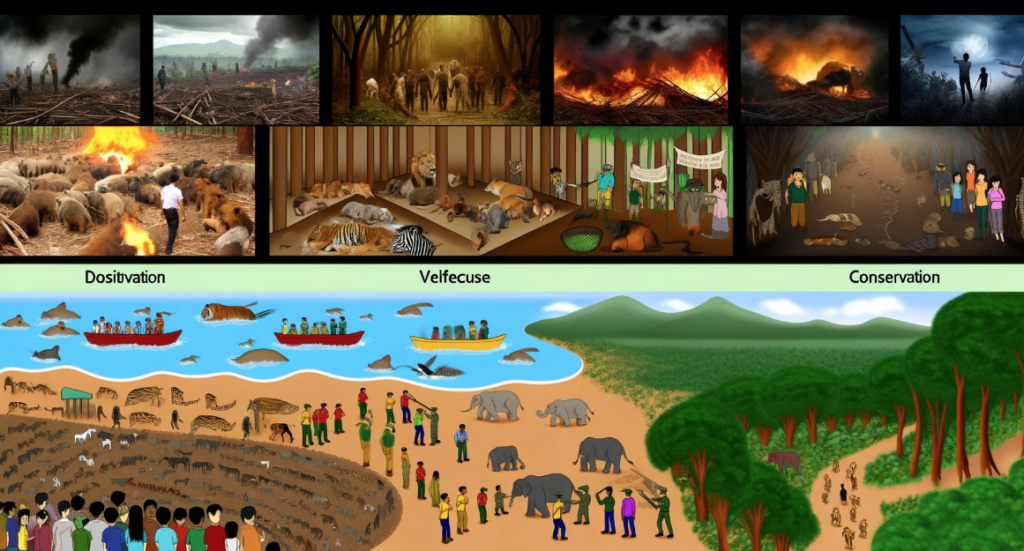Lesson 16.
Animal Rights and Conservation (動物の権利と保護)

▮ Explanatory Text:
Animal rights and conservation are critical components of global efforts to preserve biodiversity and ensure ethical treatment of all living beings. This field encompasses a broad range of issues, including habitat preservation, protection of endangered species, ethical treatment of animals in captivity and in the wild, and combating illegal wildlife trade. Advocating for animal rights and engaging in conservation efforts are essential for maintaining ecological balance, protecting natural habitats, and fostering a respectful coexistence between humans and animals. This topic explores the importance of animal rights, the challenges facing conservation efforts, and the roles individuals and organizations can play in promoting animal welfare and environmental stewardship.
▮ Common Phrases:
1. Endangered species face the threat of…
2. Habitat destruction is caused by…
3. Ethical considerations in wildlife conservation include…
4. The illegal wildlife trade contributes to…
5. Conservation efforts can be enhanced by…
▮ Example Sentences:
1. Endangered species face the threat of extinction due to habitat loss and poaching.
2. Habitat destruction is caused by deforestation, urbanization, and climate change.
3. Ethical considerations in wildlife conservation include the humane treatment of animals and protection of their natural habitats.
4. The illegal wildlife trade contributes to the decline of numerous species and disrupts ecological balance.
5. Conservation efforts can be enhanced by community engagement, protective legislation, and international cooperation.
▮ Questions:
1. Why is it important to protect animal rights and engage in conservation efforts?
This question encourages learners to reflect on the ethical, environmental, and ecological reasons for promoting animal rights and conservation.
2. What are some of the biggest threats to wildlife today, and how can they be addressed?
Participants discuss the primary threats facing wildlife, such as habitat loss and illegal trade, and explore potential solutions.
3. How do conservation efforts benefit both wildlife and human communities?
This prompts a discussion on the interconnectedness of ecosystems and the benefits of conservation for biodiversity, climate regulation, and human well-being.
4. What role can individuals play in supporting animal rights and conservation?
Learners examine how personal choices, advocacy, and support for conservation organizations can contribute to animal welfare and environmental protection.
5. Discuss a successful animal conservation project or initiative you know about. What made it successful?
This question invites learners to share examples of effective conservation efforts, analyzing the factors that contributed to their success.
▮ Discussion Instructions:
Choose an issue related to animal rights or conservation that you are passionate about. Discuss the current state of the issue, including any challenges and efforts being made to address it. Consider how awareness and action can be increased to support the cause and what steps can be taken at the individual, community, and policy levels to make a positive impact.
















